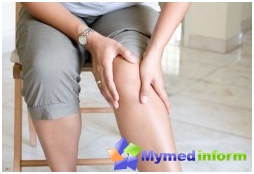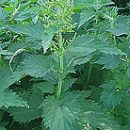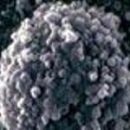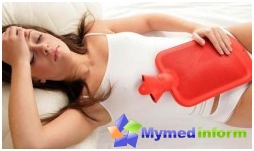
If you suddenly felt a sharp fit of the intestine, be sure there is an intestinal colic. Speaking by scientific language, colitis - the lesion of the thick intestine, which wears an inflammatory or inflammatory-dystrophic character. Determine the origin of such discomfort is very difficult. Sometimes pains are the result of stretching intestinal loops or irritation of the nerve endings of the intestinal walls due to the tension of the mesentery of the small intestines.
However, the emergence of unpleasant sensations is almost always a violation of intestinal motility mechanism: its tone and peristaltics. By the way, in case of obstruction of the intestine, pain occurs due to excessive wall peristaltics in the part of the intestine, which is above the place of obstacles. And if we consider colitis and enterocolitis, then they occur due to stretching and peristaltic abbreviations of intestinal walls, which have changed due to strong inflammation.
Causes of colitis
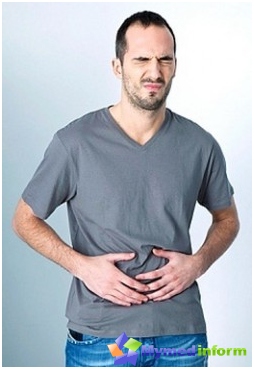
The most characteristic manifestations of intestinal colic can be considered:
- Catching pains and spasms in the intestines;
- The feeling of severe bloody and rumbling in the intestines;
- Chalch problems (regular constipation or disorder);
- Selection during defecation of mucous white «tapes» and «Tubes».
Spastic attacks arise and quickly gain momentum during or after nervous shakes, conflicts and strong experiences. If you feel the abdominal cavity during colic, you can feel the spastic abbreviation of the large intestine. Palpation is extremely painful. But at the same time, the body temperature, blood pressure is normal, no muscular voltage. The duration of the attack may vary from a few minutes to day. After the colic retreats in the patient, as a rule, constipation is observed with the allocation of the so-called «Sheep» Cala. The primary task of the doctor - in each case, to distinguish intestinal colitis from acute Gastritis, Lead colic, intestinal obstruction and abdominal syndrome (Schonlain-Genoch's disease).
Acute gastritis You can recognize for a number of dyspeptic signs: nausea, vomiting, disgusting to food, frustration of gastrogen origin. All these states are accompanied by a collective abdominal pain. In addition, the occasional violation of the digestion is evidenced by the cased language, the feeling of gravity and strong Owl of belly, Painful feeling when feeling the opposite region. About complicated gastritis can be forgotten if the patient does not complain about the inconvenience of dyspeptic origin.
Lead colic makes itself felt with harsh grab-like pains around the navel, bloating, which at first and can push the thoughts about the intestinal colic. However, in the case of pioneing, the gums are covered with black and gray border, the grayish shade acquires most of the skin, in particular the face. If you do a blood test, it will certainly indicate anemia and pathological changes in the structure of red blood cells. Lead colic finally confirm the anamnestic instructions on the activity related to the lead.
Intestinal obstruction It comes due to the mechanical blockade or due to a disorder of intestinal peristals. Based on these reasons, obstruction is divided into mechanical (anatomical) and functional (dynamic). The latter can proceed in different ways: either the peristalistic is strongly weakened, which threatens with full intestinal paralysis (paralytic obstruction), or spasms cover the entire intestinal muscles, because of which the intestinal gloss pathologically decreases. Both cases are complicated by the difficult passage of the intestinal content.
Paralytic imparency form meets most often. It can be a complication after surgery in the abdominal cavity, due to injuries. In case of hepatic or kidney colitis, with myocardial infarction, the probability of developing intestinal obstruction of this species increases. The main symptoms of dynamic obstruction can be called pain, vomiting, stopping gases, partial or complete lack of defecation.
Pain, as a rule, appear suddenly and sharply, their frequency varies, the intensity sometimes reaches a huge force, she sensations are grasp. A characteristic feature of such obstruction - a sharp decrease or almost complete disappearance of intestinal discomfort in the intervals between the attacks followed by increasing. Often it is almost impossible to determine where it hurts - colic does not have a clear localization. Shortly after the intestine began to hurt, nausea and vomiting appear. The first seizures of vomiting contain liquid and food residues, subsequent - bile, complicated vomit calls are called fecal (the belly will be severe, gases and feces are not departed). In the first hours of the attack of the stomach soft, later during palpation, the tension of the muscles of the peritoneum is detected. Paralytic obstruction completely «Disables» intestinal peristalsis, while with static obstruction intestinal motility active, although weakened.
Recently, as noted by statistics, cases of clogging of mesenteric vessels. In this regard, doctors suggest to highlight another form of intestinal obstruction - vascular. Mesente vessel thrombosis - this is a cruel-shaped abdominal pain, which is subsequently aggravated by vomiting, lack of passage of gases and feces. Very quickly in this case, peritonitis develops and bleeding in the intestine.
Abdominal hemorrhagic capillarotoxicosis (Schonlain - Genochi disease) also accompany Typical intestinal colic. The disease is expressed by attacks with periodic strong chico-like pains around the navel, in the ileum region, at the bottom of the abdomen. The pain is often complicated by constipation than disorder. Blood and mucus are present in feces. From intestinal colitis, a specialist can distinguish such an abdominal complication by the presence of hemorrhagic rash on the skin, joint pain, jade symptoms and intestinal bleeding.
Treatment of intestinal colitis
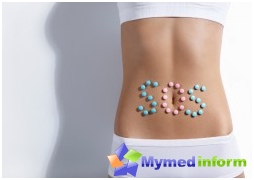
Our site notes that in case of intestinal colic, it is impossible to abuse painkillers - they «Smarty» The clinical picture of what is happening, and the doctor will not be able to put the correct diagnosis! However, with a strong attack, you can use antispasmodics and wind turbines (vegetable origin or with a symethycone in the composition). In most cases, the colishes of the intestine requires urgent medical intervention.
The patient is sent to the surgical department even if the final diagnosis has not yet been made, but there is only an assumption of intestinal obstruction. The district doctor, finding acute intestinal obstruction, does not apply any narcotic drugs to facilitate the patient's condition, otherwise the disease will be darled. Also refrain from the belly. When the attack of the mucous membrane is installed, heat to the abdominal area and oil enema. Of the preparations of the patient prescribe subcutaneous injections of atropine, papaverine and diploma, intravenous - novocaine. After the doctors removed the attack of sharp pain, the patient is provided by desensitizing treatment.
The diet of a person who has repeatedly encountered intestinal colic must be rich in fiber. Contains fiber in raw and boiled vegetables, fruits, artichokes, especially a lot of this substance in grated apples and carrots, in a pumpkin. In order to prevent frequent seizures of intestinal colic, you need to put a taboo on products with a high percentage of fat, legumes, soft white bread, sharp seasonings, ketchups and mayonnaise.




